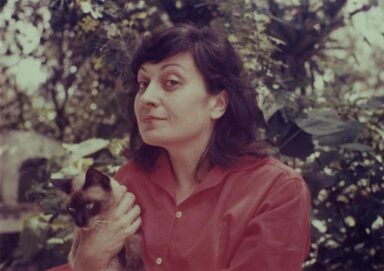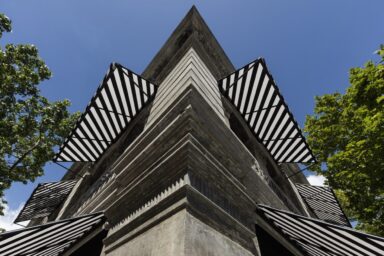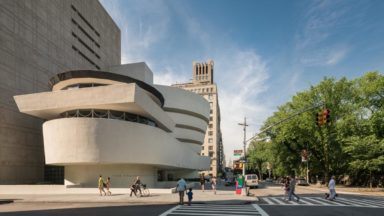THE IMPACT OF ARTIFICIAL INTELLIGENCE OVER THE CITY IS QUESTIONED BY THE BIENNIAL OF URBAN PLANNING / ARCHITECTURE OF HONG KONG AND SHENZHEN WITH THE EXHIBITION “EYES OF THE CITY”
Edited by: Fiammetta Cesana
The most visited architectural event in the world, the Biennale of Urban Planning / Architecture in Hong Kong and Shenzhen (UABB), will open tomorrow, December 21st, in the city of Shenzhen, China. The “Eyes of the City” section, curated by MIT professor Carlo Ratti, Politecnico of Turin and South China University of Technology-SCUT, was conceived for a complete digital fabrication, both at local level and through a global network of Fab Labs, in collaboration with the Fab Foundation. The exhibition aims to involve a global audience in a critical discussion on the impact of A.I. and new technologies on the cities, and will incorporate a face recognition platform in their spaces. The exhibition will remain open until March 2020 and will present a series of public events with over 80 international speakers, promoting the exchange of knowledge.
Focusing on various technologies and their impact on everyday life and design practices, “Eyes of the City” will be the first architectural exhibition to include facial recognition in its exhibition spaces. The exhibition can be accessed through two information points, designed by the Dutch studio MVRDV with the support of The Cooper Union, which incorporate facial recognition technology but offer people the opportunity to preserve their anonymity by wearing an “opt-out” sticker and knowing the position of the cameras in advance, thanks to explicit indications. The exhibition is divided into eight sections, each of which deals with a different aspect of the impact of technology on the cities:
1- World’s Urban Lab
2- Mobility Landscapes
3- Silicon Pupils
4- Digital Society
5- Design Intelligence
6- Artificial Ecologies
7- Resisting technologies
8- Curating the City
The exhibition’s installations were produced and assembled on site: a choice that wants to be both a tribute to the role of Shenzhen as a “factory of the world”, and a way to introduce digital fabrication in an exhibition process. For each project, the exhibitors provided a series of precise instructions for its realization which, in conjunction with the exhibition’s opening, will be available online, in open source, to allow anyone interested not only to dispose of the material, but also to use it to rebuild installations or develop them according to their needs.
To further expand the boundaries of the initiative, “Eyes of the City” announced a partnership with the world’s largest Fab Labs network, the Fab Foundation: the themes and concepts that will develop during the event will reach even those who won’t participate in the exhibition, thanks to the laboratories present in many cities, including Hong Kong (Openground), Shenzhen (SZOIL), Seoul, San Francisco, Boston and Lima. Networked together, they can become the fulcrum for experimenting with the ideas and projects presented for the first time in Shenzhen, improving their features or reinterpreting them thanks to local contextualization.
“The title “Eyes of the City” was inspired by the idea of “eyes on the street” by Jane Jacobs, which brought people back to the center of the city’s creation. The exhibition reflects on what happens when the urban landscape itself acquires the ability of observing us. At a time when urban technologies are under control all over the world, we have tried to trigger conversations and create connections far beyond Shenzhen. The online and open source approach was designed to encourage critical exchange across borders. We are excited to work with the Fab Foundation to achieve this goal.” Says Carlo Ratti, director of the Senseable City Lab at the Massachusetts Institute of Technology.
The exhibition will extend over an area of over 5,000 square meters, reacting to the position of its transport hub with a unique design, inspired by duty-free shopping areas. The architectural project was developed by CRA and Politecnico of Turin (DAD – China Room), while the visual language was conceived by the Dutch graphic designer Mieke Gerritzen. The location in the heart of Futian’s high-speed station also becomes tools to engage a wider audience of visitors, travelers and passers-by.
“Eyes of the City explores the crucial role that technology is destined to play in our daily urban life. Our cities, enhanced by technology, could improve people’s well-being, but also become dystopian places. An open debate can represent an antidote to this scenario. The eighth edition of UABB is the first Biennial to include universities among its curators: this has been fundamental to ensure an open exchange of knowledge at the base of the curatorial process. We have created a platform for debate, organizing a series of interviews with authoritative guests and scholars”, argues Michele Bonino, delegate of the director for relations with China of Politecnico of Turin.
Biennale of Urban Planning / Architecture in Hong Kong and Shenzhen (UABB)
All the info and updates will be available at: “Eyes of the City”
Shenzhen, China
From December 21st, 2019 to March 2020
Cover: A New Breed of Architectural Objects – Dominique Perrault Architecture + DPA-X


